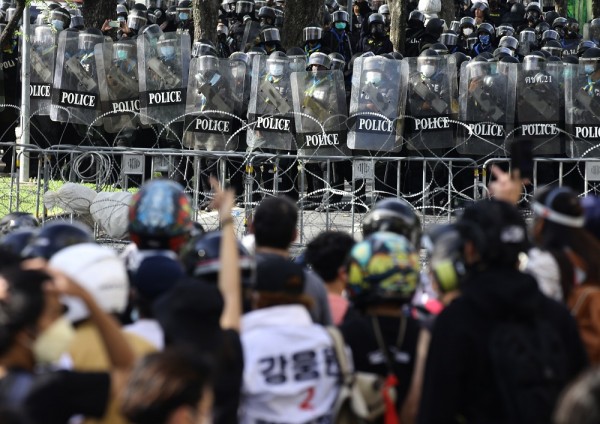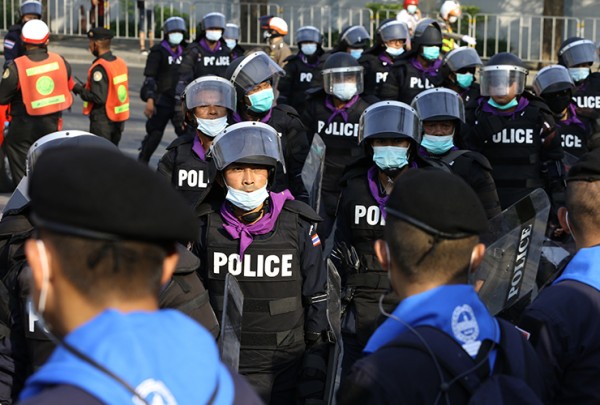As a tenuous peace returns to the Thai capital Bangkok after violent clashes between ‘Red Shirt’ protestors and the army last week, the International Press Institute (IPI) today called on the government to launch as a matter of urgency a full and transparent investigation into the killing and wounding of journalists during the violence.
On 19 May, Prime Minister Abhisit Vejjajiva’s government launched a military offensive against a stronghold of the ‘Red Shirt’ protesters, bringing an end to weeks of protests. Dozens of people were killed during the unrest.
The violence in Thailand claimed the lives of two journalists, and injured at least five more.
Despite calls from international organizations, including IPI, and the Japanese government, no arrests have been made.
“Both the protesters and the army failed to respect the right of journalists to gather and transmit information in conflict zones,” said IPI Director Dadge. “The government must fully investigate all incidents of violence against the media, and bring those responsible to justice. The Thai government must send a very clear message that the killing and wounding of journalists is unacceptable. If it fails to do so, it risks undermining its own reputation before the international community.”
The journalists killed and wounded during the violence include:
Hiro Muramoto: A Reuters cameraman, he was among at least 21 people killed in clashes between anti-government protesters and security forces on 10 April. Muramoto, 43 and a Japanese national, had been employed with Reuters’ Tokyo bureau for the past fifteen years. He was shot in the chest by an unknown assailant.
Fabio Polenghi: An Italian photojournalist, he was shot dead on 19 May, as he covered the military crackdown in Bangkok.
Winnai Ditthajorn: A freelance photographer for Australia’s ABC News, he was admitted to hospital with a gunshot wound to his left leg on 10 April.
Michel Maas: A Dutch journalist, who reported for Netherlands Radio Worldwide (NWR) and the Volkskrant newspaper – also based in the Netherlands – he was shot in the shoulder during the chaos that surrounded the assault on ‘Red Shirt’ barricades by the Thai army. A Volkskrant editor, Leen Verraeke, told IPI at the time that Maas was with the ‘Red Shirt’ protestors when the army began its assault. Maas told Verraeke that the army “shoot everything that’s moving and don’t ask if you are a reporter before shooting.” Verraeke said Maas “believes he was shot by an army bullet.”
Chandler Vandergrift: A freelance Canadian writer and photographer, he was seriously injured when an M79 grenade exploded on a bridge in the capital. He underwent extensive brain surgery, but is now out of danger.
Andrew Buncombe: A reporter for Britain’s The Independent in Bangkok, he was shot and injured while covering the Thai army assault on Red Shirt demonstrators. He was hit in the outer thigh by pellets from a shotgun.
Chaiwat Phumpuang: A reporter with the Phuket Gazette, he was shot in the leg on 16 May while covering the demonstrations.
Thailand’s The Nation newspaper also reported that a journalist was among four people wounded in an M79 grenade attack, and an American documentary filmmaker was reportedly treated for a gunshot wound in his leg.
In addition to reports of violence against the media, several media outlets were targeted by protesters because of a perceived bias in their coverage.
Protesters besieged the offices of Channel 3, a TV station whose staff had been surrounded and harassed on Friday, 14 May, by protesters who accused them of being biased against the ‘Red Shirts’ in their reporting.
At the time, the editor of the Nation newspaper, Tulsathit Taptim, told IPI that media organizations were advising their staff to refrain from wearing their press armbands, for fear of being identified as journalists and risking attack.


